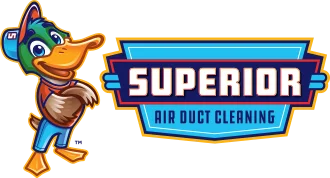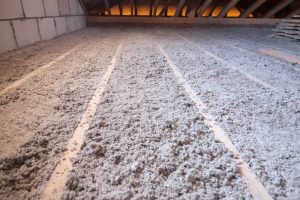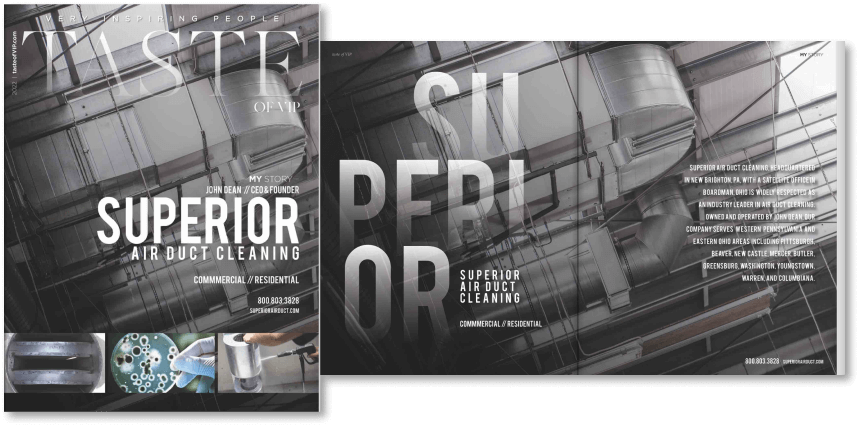Attics aren’t the most comfortable or easiest spaces to crawl through. But when you need your old, contaminated attic insulation removed, you’ve got very little choice in the matter. You need to take out your ductwork insulation and replace it.
Superior Air Duct in New Brighton, PA., is here to help. Here are some quick tips when it comes to do-it-yourself insulation removal.
The Effects Of Damaged Ductwork Insulation
Damaged air duct insulation compromises your home’s energy efficiency, puts more pressure on your HVAC to work harder, and increases your monthly utility bill. If it’s contaminated, not only is your house energy inefficient, but your indoor air quality is poor, impacting your health.
Residential ductwork insulation can get compromised in all sorts of ways, be it via invasive pests laying nests and making tears to your ductwork, water damage from a leak or compromised area of the house, or mold and asbestos accumulation.
Related Post: What Can Collect in Your Ducts
Before You Start — Don’t: Call A Duct Cleaning Company
Rather than doing it yourself, it’s advised that you hire a professional contractor to take care of removing your insulation. Trained, experienced ductwork cleaning specialists will have the right PPE and commercial tools to get the job done right the first time.
Hazardous Types Of Insulation to Avoid
It’s risky and potentially hazardous to your health to remove insulation by yourself. It’s best to let a professional take on the risk for you. There could be mold from a water leak or toxic droppings from a pest infestation.
You’ll also want a professional duct cleaning technician to deal with the following types of insulation.
- Vermiculite: Get it removed by asbestos abatement professionals. You’ll need to seal off the area since normal removal methods release dangerous spores that become airborne in your whole home.
- Cellulose: Older cellulose can pose a fire hazard.
- Balsamic Wool: It’s known to contain carcinogens (substances that cause cancer formation).
The benefits Of hiring A company For Insulation Removal Are Clear:
- Save time
- Get security and peace of mind knowing it’s been done correctly
- Mitigate health risks (contaminants, rodents, and more)
- Save long-term expenses
How Much Does Attic Insulation Removal Cost?
The average price is $1 to $2 per square foot, but can range upward depending on the extent of the damage, or the presence of hazardous substances that may require sectioning off part of the house. By-hand removal will cost more since it’s more time-consuming than using a vacuum. Not only does the type of insulation impact costs, but your attic may be too small to fit the vacuum, requiring insulation removal by hand.
Signs Your Attic Insulation Needs Replacing
- Crumbling insulation due to aging or damage.
- Moisture or visible water damage.
- Mold (black spots or streaks on insulation).
- Animal waste, droplets, urine, gnaw marks, or tunneling.
Preparing For Attic Insulation Removal
- Clear out any boxes, items, or objects taking up space in your attic. This way, you won’t risk contaminating any of your items, and you’ll have an easier time navigating the attic.
- Create a clear path from your attic to your front door and the dumpster. You’ll want to cover the floors and walls along the pathway with masking tape.
- Gather all of the necessary gear and stage it near your garage, lawn, or driveway. You’ll want all of your gear in an easy-to-access location.
Precautions: Navigating The Attic Crawl Space
- Wear a hard hat. Nails and hard-edged wooden pieces often protrude through the roof.
- Use a work light, hanging flashlight, or headlight attached to your hardhat. Attics aren’t the best-lit spaces in a home.
- Step only on the floor joists. The drywall on the floor might not support your weight. Add some 3” plywood to better support your body weight.
- Wear rubber-coated work gloves to protect your hands and a face mask to protect your lungs from any dust.
- Wear some anti-fog protective eyewear (goggles).
- Spray foam insulation is hazardous and irritating to the skin. Wear full-body protective clothing to avoid contaminants getting right on your skin.
Examine The Type Of Duct Insulation
First, take a look at the type of insulation in your attic’s ductwork. The four most common are loose-fill, roll insulation, reflective and radiant barriers (aluminum-looking and common in attics), and foam-in-place insulation (great for blocking outside air and noise).
Loose-Fill Cellulose Insulation
It’s very common in attics and known as “blown-in” insulation, which comes in a brown or gray color and crumbles apart when you grab it. You’ll need an industrial hose to suction up this insulation. It’s often made of cellulose or fiberglass (which is often recyclable).
Blanket Insulation
Referred to as Batt and Roll insulation, it’s often pink or yellow in color and comes in a thick 4-inch to 12-inch mat of material that, due to its rigid structure, you can easily roll up and put into a waste bin. It’s usually made of fiberglass, rock wool or flex fibers.
Tools and Equipment You’ll Need for Insulation Removal
- 23 horsepower commercial grade insulation removal vacuum (you can purchase or rent a large capacity vacuum from a commercial equipment rental facility).
- 150-foot (4”-10”) vacuum hostess, metal hose connector, and industrial vacuum bags to put the damaged insulation into.
- Ladder. You’ll want it between six and 10 feet.
- Floor and wall coverings and masking tape to hold them up.
- A large trash bin or dumpster.
- Get rakes, dustpans, and a HEPA-filtered shop vac as an alternative to a commercial-grade insulation removal vacuum.
5-Step Process to Remove Duct Insulation
- Put on your protective gear.
- Get someone to help monitor your commercial-grade insulation vacuum.
- Climb into the attic and begin suctioning out the loose insulation (for rigid insulation, just roll it up and place it into your waste bin).
- Use rakes and dustpans to clear any loose debris.
- Dispose of the old, damaged insulation in the dumpster.
Contact Superior Air Duct for Insulation Removal Services
Want to avoid the hassle of a DIY attic insulation removal? We don’t blame you. Contact Superior Air Duct today for a free quote on our removal and installation services for either our Eastern Ohio or Western Pennsylvania locations at (724) 847-9444.




